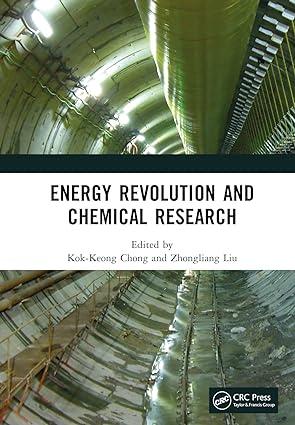Answered step by step
Verified Expert Solution
Question
1 Approved Answer
An engineer decides to set up a solar pond, which stores thermal energy by making a high salinity layer at the bottom of the pond
An engineer decides to set up a solar pond, which stores thermal energy by making a high salinity
layer at the bottom of the pond that is sufficiently dense that it will not float to the top, minimizing
convection and thus sequestering heat in the lower layer of the pond. She looks to accomplish this
by first covering the bottom of a reservoir with a solid layer of salt and then adding fresh water to a
depth at time Diffusion of the salt into the fresh water will then generate the
necessary salinity gradient.
The salt is NaCl, which has a diffusivity in water of at and saturation
density in water
As a first approximation, it can be assumed that the diffusion coefficient and the total mass density
in the solution, are constant. Note that the assumption of constant total density implies that a
certain mass of salt is replaced by an equal mass of water during dissolution.
A Starting from Ficks rate equation and the general differential equation for mass transfer,
derive the differential equation for mass density of NaCl in the solar pond, Dnacl Make
sure to clearly state your assumptions.
B Provide the initial andor boundary conditions needed to solve the differential equation for
the early stages of the salt dissolution process.
C According to laboratory experiments, the solar pond will start working once the salt
concentration at cm from the bottom reaches of saturation. How long will it take
before the pond is operational?
D If the density of salt is DNaCl kgm calculate by how much the thickness of the salt
layer at the bottom has changed when the pond becomes operational.
E Under operating conditions, the water temperature varies from deg C at the water surface to
deg C near the bottom of the pond. Give a quantitative assessment of the initial assumption
that D ms is constant in the solar pond by calculating how much D can be
expected to vary. Hint: look at the key parameters potentially changing in this situation
based on for example, StokesEinstein and Wilke and Chang equations.
F How does the answer in part E affect the time you calculated in part C meaning, is the
answer in C accurate, and if not then in what direction is it potentially inaccurate?

Step by Step Solution
There are 3 Steps involved in it
Step: 1

Get Instant Access to Expert-Tailored Solutions
See step-by-step solutions with expert insights and AI powered tools for academic success
Step: 2

Step: 3

Ace Your Homework with AI
Get the answers you need in no time with our AI-driven, step-by-step assistance
Get Started


